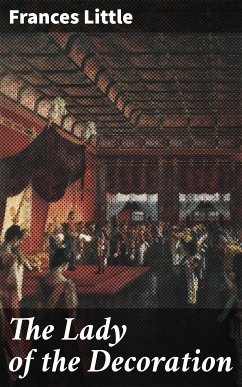
The Lady and Sada San (eBook, ePUB)
A Sequel to the Lady of the Decoration
Versandkostenfrei!
Sofort per Download lieferbar
0,49 €
inkl. MwSt.
Weitere Ausgaben:

PAYBACK Punkte
0 °P sammeln!
In "The Lady and Sada San," Frances Little weaves a captivating narrative that explores the intersection of Eastern and Western cultures through the experiences of an American woman in Japan. The book, marked by its vivid descriptions and rich characterizations, reflects the author's adept use of a first-person perspective, allowing readers to immerse themselves in the protagonist'Äôs emotional journey. Written during the early 20th century, the novel captures the complexities of cultural exchange at a time when Japan was opening its doors to the West, offering insights into social dynamics ...
In "The Lady and Sada San," Frances Little weaves a captivating narrative that explores the intersection of Eastern and Western cultures through the experiences of an American woman in Japan. The book, marked by its vivid descriptions and rich characterizations, reflects the author's adept use of a first-person perspective, allowing readers to immerse themselves in the protagonist'Äôs emotional journey. Written during the early 20th century, the novel captures the complexities of cultural exchange at a time when Japan was opening its doors to the West, offering insights into social dynamics and gender roles that remain relevant today. Frances Little, a pseudonym for author and journalist, was deeply influenced by her travels in Asia, especially her time in Japan. Her background and experiences as a woman navigating a foreign society informed her writing, enabling her to provide a nuanced portrayal of cross-cultural interactions. Little's commitment to portraying authentic voices and genuine experiences reflects her broader goal of fostering understanding between divergent cultures, marking her work as significant within the context of American expatriate literature. I highly recommend "The Lady and Sada San" to readers interested in themes of cultural identity and transformation. It invites thoughtful reflection on the nature of belonging and the complexities of love across boundaries, making it an essential read for anyone fascinated by historical and relational dynamics in literature.
Dieser Download kann aus rechtlichen Gründen nur mit Rechnungsadresse in A, B, BG, CY, CZ, D, DK, EW, FIN, F, GR, H, IRL, I, LT, L, LR, M, NL, PL, P, R, S, SLO, SK ausgeliefert werden.













